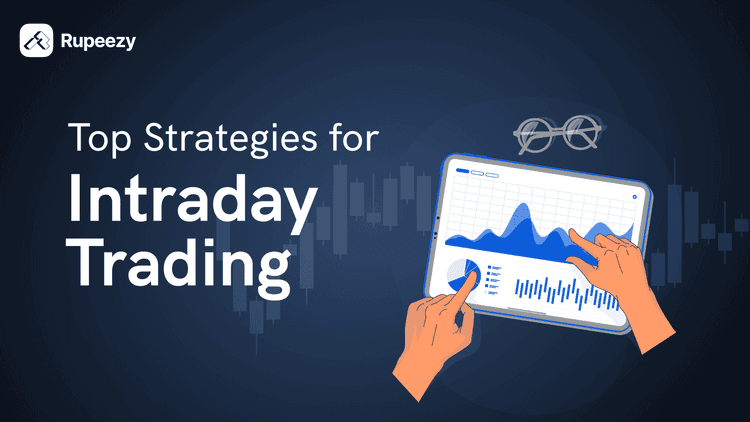BSE Midcap vs Nifty Midcap 2025: Which Index to Watch?


00:00 / 00:00
When investors look beyond large-cap stocks, mid-cap indices often become the next target for growth opportunities. Among the most tracked benchmarks in this segment are the BSE Midcap and Nifty Midcap indices. Both represent mid-sized companies with the potential to become tomorrow’s large caps — but which of these two is better for you?
In this article, we’ll break down the meaning, composition, and performance aspects of both the BSE Midcap and Nifty Midcap indices. By the end, you’ll have a clear understanding of their similarities, differences, and how you can use each for building a more balanced portfolio.
Which Index Matters More in 2025: BSE Midcap or Nifty Midcap?
Feature | BSE Midcap Index | Nifty Midcap Index |
|---|---|---|
Exchange | Bombay Stock Exchange (BSE) | National Stock Exchange (NSE) |
Number of Constituents | 150 companies | 150 companies |
Base Year | 2002–03 | 2002–03 |
Base Value | 1000 | 1000 |
Weighting Method | Free-float market capitalization | Free-float market capitalization |
Sector Composition | Broad exposure to manufacturing, finance, and consumption | Broad exposure to industrials, financial services, and healthcare |
Rebalancing Frequency | Semi-annually | Semi-annually |
Benchmark Use | Used for BSE Midcap mutual funds & ETFs | Used for Nifty Midcap mutual funds & ETFs |
Index Code | S&P BSE Midcap |
While both indices track the same market segment, they differ in terms of exchange coverage, stock selection criteria, and sector weightages. Let’s dive deeper into what exactly “midcap” means — and then explore the meaning of each index individually.
What is a Midcap in the Stock Market?
In the Indian stock market, companies are classified into large-cap, mid-cap, and small-cap based on their market capitalization — essentially, the total market value of all their outstanding shares.
According to SEBI’s classification:
Large-cap stocks: Top 100 companies by market capitalization.
Mid-cap stocks: Ranked 101st to 250th in terms of market capitalization.
Small-cap stocks: Ranked 251st and below.
Mid-cap companies sit in the sweet spot between stability and growth. They usually have:
Proven business models
Consistent revenue growth
Potential to scale further
This makes them particularly attractive to investors who want higher returns than those of large caps, but without the extreme volatility of small caps.
When you invest in a midcap mutual fund or index fund, you’re indirectly investing in these companies through indices such as the BSE Midcap or Nifty Midcap 150.
BSE Midcap: Meaning and Overview
The S&P BSE Midcap Index is designed to represent the performance of mid-sized companies listed on the Bombay Stock Exchange (BSE). It acts as a barometer for the overall health of India’s mid-cap segment.
Key Highlights:
Introduced by: BSE in partnership with S&P Dow Jones Indices.
Constituents: Around 150 mid-cap stocks, selected based on free-float market capitalization.
Rebalancing: Happens semi-annually to ensure accurate representation of the mid-cap space.
Sector spread: Financials, manufacturing, capital goods, IT services, healthcare, and consumer durables.
Why it matters:
The BSE Midcap index provides a diversified exposure to mid-cap stocks traded on BSE. It’s often used as a benchmark for mid-cap mutual funds that are BSE-centric or for ETFs listed on the exchange.
Performance Insight:
Historically, the BSE Midcap index has shown higher volatility but stronger returns during bullish phases compared to large-cap indices like the Sensex. However, during market corrections, it tends to decline faster — a typical mid-cap behavior.
Nifty Midcap: Meaning and Overview
The Nifty Midcap 150 Index represents the next 150 companies after the top 100 large-caps listed on the National Stock Exchange (NSE). It gives investors exposure to the fast-growing mid-cap space across multiple sectors.
Key Highlights:
Introduced by: NSE Indices Limited (formerly India Index Services & Products Ltd).
Constituents: 150 stocks ranked 101st–250th by full market capitalization.
Weighting: Free-float market capitalization-weighted.
Rebalancing: Semi-annual review in March and September.
Sector exposure: Financial services, industrial manufacturing, pharmaceuticals, consumer goods, and energy.
Why it matters:
The Nifty Midcap 150 serves as a benchmark for a large number of mid-cap mutual funds and index funds in India. Because NSE has higher trading volumes and liquidity, the Nifty Midcap index often reflects more active investor participation.
Performance Insight:
Over long periods, the Nifty Midcap 150 has delivered superior compounded annual growth rates (CAGR) compared to large-cap indices like Nifty 50, though with higher drawdowns in volatile phases. It’s particularly popular among SIP investors seeking mid-term growth.
BSE Midcap vs Nifty Midcap: Which Is Better?
Here’s how you can think about it:
Liquidity: The Nifty Midcap index often enjoys better liquidity due to higher NSE trading volumes.
Representation: BSE Midcap has more exposure to industrial and domestic-focused companies, while Nifty Midcap 150 has broader diversification.
Fund Tracking: Most mutual funds benchmark against the Nifty Midcap 150, though some ETFs use BSE Midcap.
Volatility: Both indices carry similar risk levels, but BSE Midcap can show slightly higher swings in short-term periods.
Historical Returns: Historically, performance differences are minimal over the long run — averaging 11–14% CAGR over 5–10 years.
Investor takeaway:
Choose based on your investment platform and fund preference. If your preferred ETF or mutual fund tracks the Nifty Midcap 150, that’s a strong, liquid option. However, if you trade or invest via BSE, the S&P BSE Midcap index is equally robust.
Conclusion
Both the BSE Midcap and Nifty Midcap indices play a vital role in helping investors track and participate in India’s mid-cap growth story. They represent a dynamic group of companies, stable enough to weather uncertainty but young enough to expand rapidly.
In essence:
The BSE Midcap Index offers a strong representation of mid-caps on the Bombay Stock Exchange.
The Nifty Midcap 150 Index provides a diversified, liquid, and widely benchmarked option through NSE.
Whether you’re an active trader or a long term investor, understanding these indices can help you make more informed decisions about your midcap mutual funds, ETFs, or stock portfolio.
Explore both on Rupeezy’s Market Indices section to compare live performance, returns, and constituent stocks.
The content on this blog is for educational purposes only and should not be considered investment advice. While we strive for accuracy, some information may contain errors or delays in updates.
Mentions of stocks or investment products are solely for informational purposes and do not constitute recommendations. Investors should conduct their own research before making any decisions.
Investing in financial markets are subject to market risks, and past performance does not guarantee future results. It is advisable to consult a qualified financial professional, review official documents, and verify information independently before making investment decisions.
Open Rupeezy account now. It is free and 100% secure.
Start Stock InvestmentAll Category









